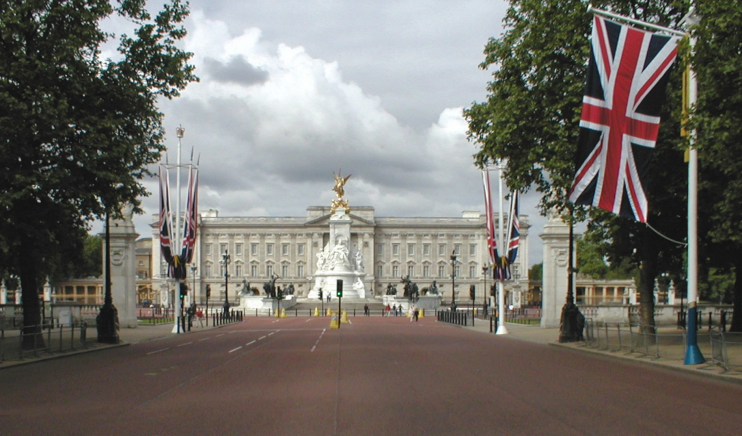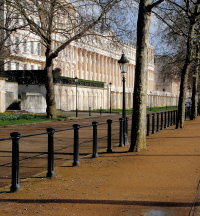The Mall
The Mall, Westminster
The ceremonial route leading from Admiralty Arch to Buckingham Palace, bordered by St James’s Park along most of its southern side

Charles II laid out the Mall in 1662 as a successor to the glorified croquet alley of Pall Mall. The boulevard grew in significance when St James’s Palace became the monarch’s principal home following the destruction by fire of the Palace of Whitehall in 1698.
As the sport of pallemaille declined in popularity the Mall became a place of public promenade, later giving its name to the American cultural phenomenon the shopping mall, which was originally a store-lined street closed to vehicular traffic.
The palatial Carlton House was built on the north side of the Mall shortly after 1700. Frederick, Prince of Wales, bought the house in 1732 and it was granted to his grandson, George, later Prince Regent, in 1783. George remodelled, decorated and furnished Carlton House with excellent taste and at great expense but he moved out on his ascent to the throne as George IV in 1820.

The mansion was demolished a few years later, to be replaced by Carlton House Terrace, which consists of a pair of terraces, each of nine sumptuous houses, planned by John Nash and completed in 1832. Carlton House Terrace is presently home to several august institutions, notably the Royal Society, the British Academy, the Royal Academy of Engineering, the Royal Society of Portrait Painters and the Institute of Contemporary Arts.
Between the two ranges of Carlton House Terrace, the Duke of York’s Column overlooks the Mall from the top of Waterloo Steps. The column was built in 1833 to honour Frederick, Duke of York, who was George III’s second son.
With the accession of Victoria to the throne in 1837, Buckingham Palace became the new royal residence and the Mall’s straight-line approach to the palace brought it even greater status. From the late 19th century the Mall served as the carriage drive for all royal processions and for the arrival of foreign dignitaries at Buckingham Palace. The construction of Admiralty Arch and the Victoria Memorial at opposite ends of the Mall in 1910 and 1911 brought greater formality to the ceremonial route.
The National Police Memorial was erected near the junction of Horse Guards Road with the Mall in 2005. Queen Elizabeth II said at the unveiling ceremony, “It is surely appropriate that this should be positioned in the Mall – an area of London so often associated with our national way of life.”
The Mall is usually lined with Union flags but during state visits these are intermixed with the appropriate national flags. The road is closed to vehicular traffic on Sundays, public holidays and state occasions.
Thomas Gainsborough painted The Mall in St James’s Park around 1783, a scene described by Horace Walpole as ‘all aflutter like a lady’s fan’. New York’s Frick Collection acquired the work in 1916.
